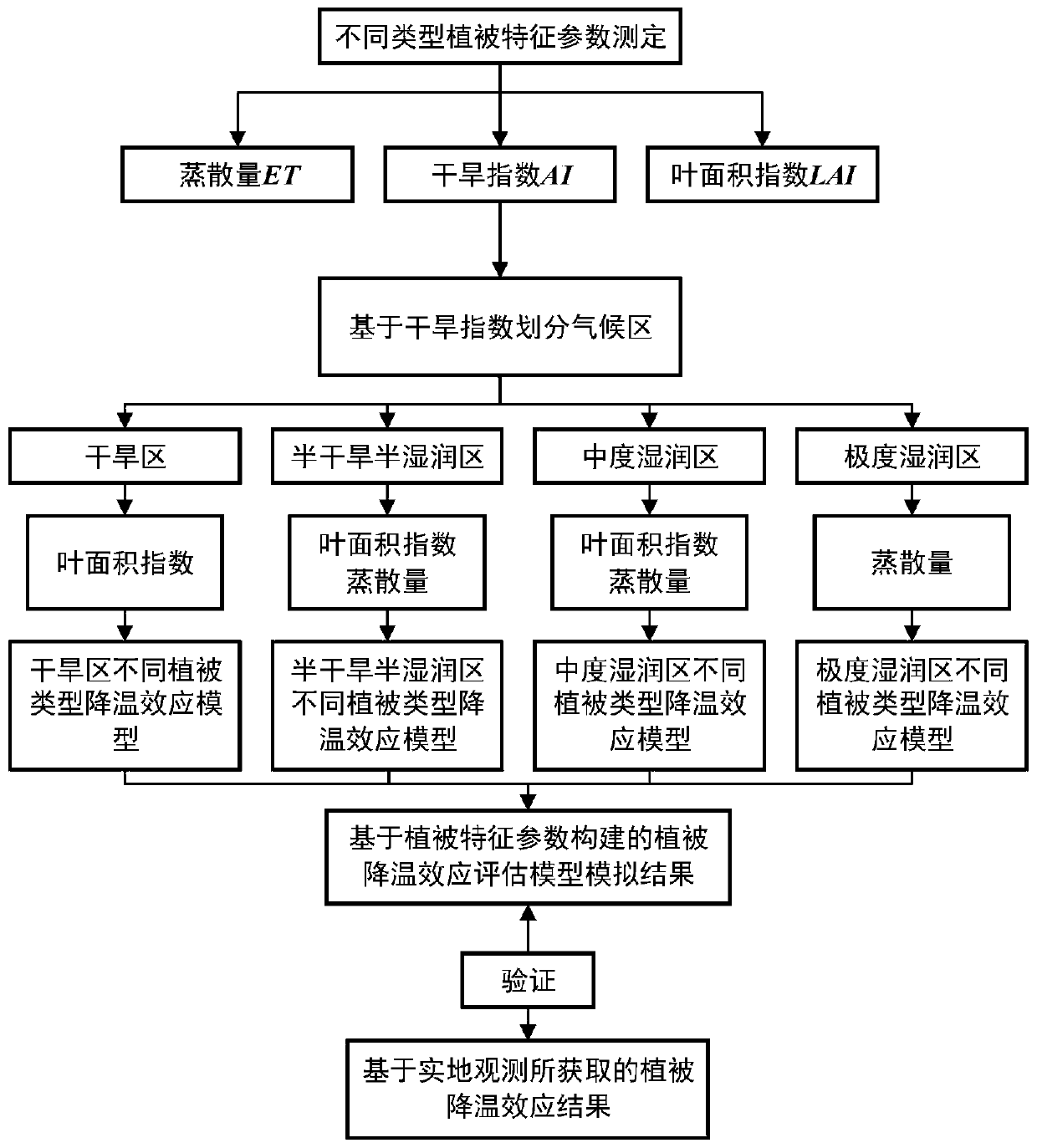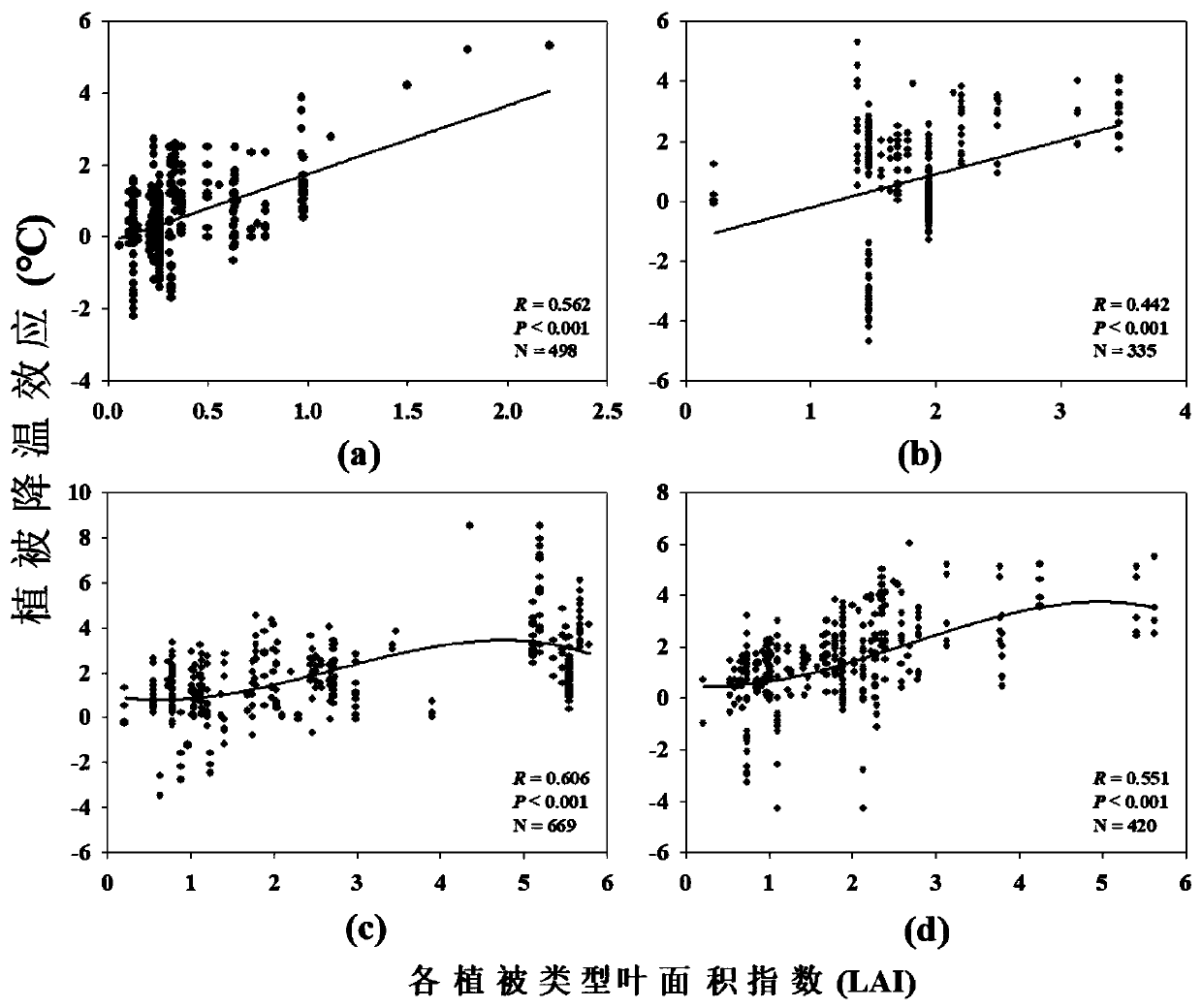Method and system for quantitatively evaluating urban green land cooling effects in different climatic areas
A quantitative evaluation and effect technology, applied in measurement devices, instruments, analytical materials, etc., can solve the problems of inability to directly obtain the temperature under forest, high cost, long monitoring period, etc.
- Summary
- Abstract
- Description
- Claims
- Application Information
AI Technical Summary
Problems solved by technology
Method used
Image
Examples
Embodiment
[0145] see Figure 1 to Figure 6 , a quantitative assessment method for the cooling effect of urban green spaces in different climate zones, including
[0146] Step 1: Obtain the monthly average temperature, normalized difference vegetation index, annual average rainfall, monthly average rainfall and monthly actual sunshine hours of the plot to be evaluated.
[0147] Step 2: Calculate the vegetation drought index based on the annual average rainfall, monthly actual sunshine hours and monthly average temperature.
[0148] According to the annual average rainfall, monthly actual sunshine hours and monthly average temperature, the vegetation drought index is calculated as:
[0149] AI=P a / PET
[0150] In the formula, P a represents the average annual rainfall (mm), PET represents the potential evapotranspiration (mm),
[0151] The potential evapotranspiration is:
[0152]
[0153] In the formula, T (°C) is the monthly average temperature, S is the actual monthly sunshin...
PUM
 Login to View More
Login to View More Abstract
Description
Claims
Application Information
 Login to View More
Login to View More - R&D
- Intellectual Property
- Life Sciences
- Materials
- Tech Scout
- Unparalleled Data Quality
- Higher Quality Content
- 60% Fewer Hallucinations
Browse by: Latest US Patents, China's latest patents, Technical Efficacy Thesaurus, Application Domain, Technology Topic, Popular Technical Reports.
© 2025 PatSnap. All rights reserved.Legal|Privacy policy|Modern Slavery Act Transparency Statement|Sitemap|About US| Contact US: help@patsnap.com



